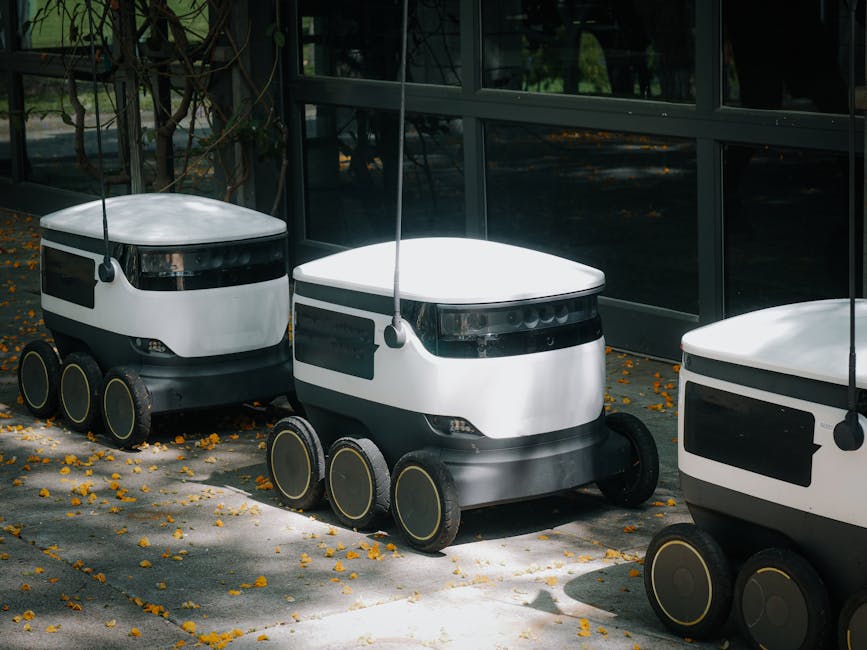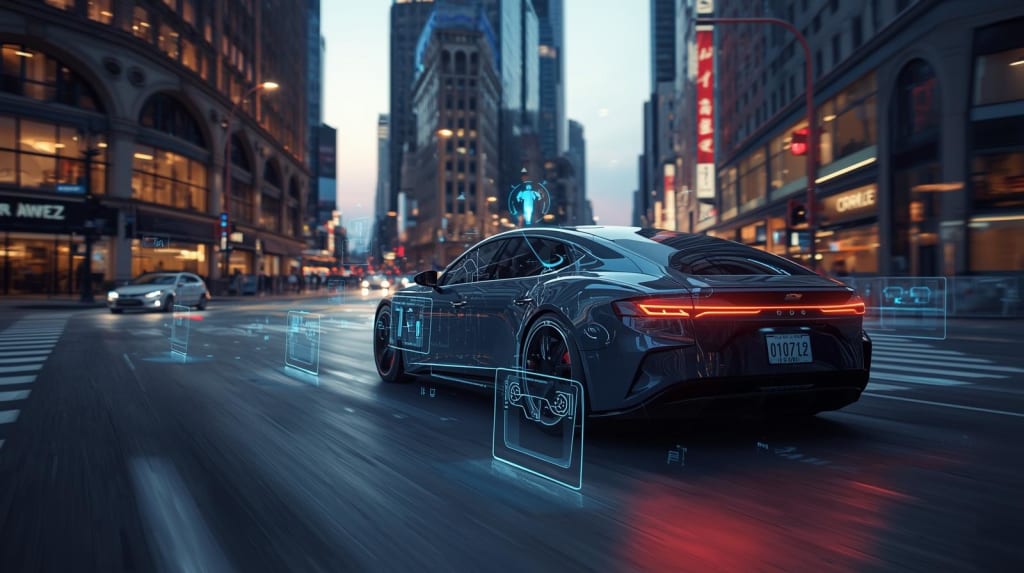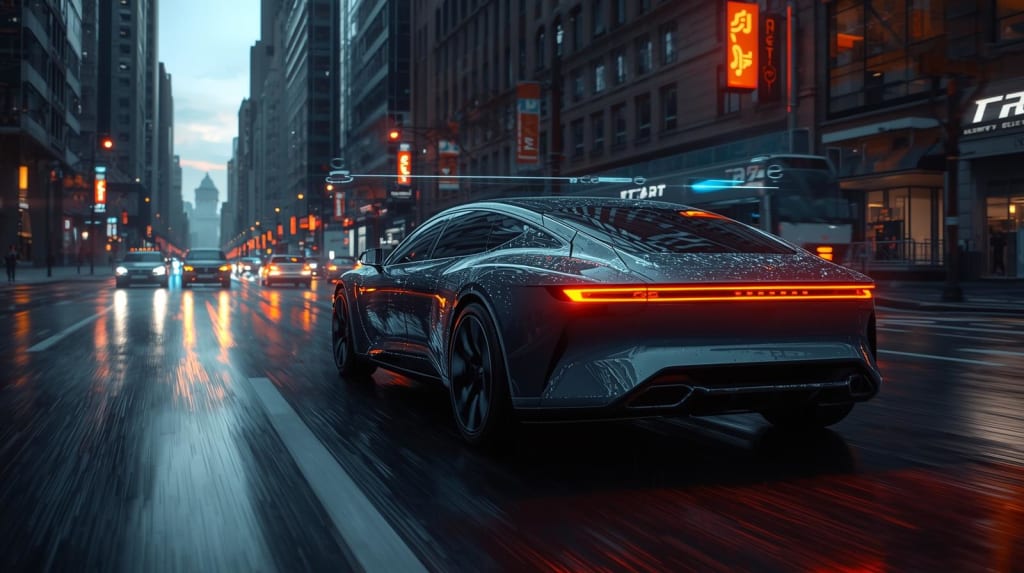The Future of Self-Driving Smart Cars: What’s Next?
The landscape of transportation is rapidly evolving, and at the forefront of this transformation are self-driving smart cars. These vehicles, equipped with advanced technologies, are designed to navigate and operate without human intervention. As we look ahead, it’s essential to explore what the future holds for these innovative automobiles.

In this article, we will discuss the current state of self-driving cars, the technological advancements that are shaping their future, the potential benefits and challenges they present, and what we can expect in the coming years.
The Current Landscape of Self-Driving Technology
As of now, several companies are actively developing self-driving technology, each with its unique approach and vision. Major players include tech giants like Tesla, Google’s Waymo, and traditional automotive manufacturers like Ford and General Motors. These companies are investing heavily in research and development to create vehicles that can operate autonomously.
Currently, most self-driving cars are classified into levels of automation, ranging from Level 0 (no automation) to Level 5 (full automation). Most vehicles on the road today fall within Levels 2 and 3, where they can assist with driving tasks but still require human oversight. Level 4 vehicles can operate autonomously in specific environments, while Level 5 vehicles are expected to handle all driving tasks in any condition.
Technological Advancements Shaping the Future
The future of self-driving cars is being shaped by several groundbreaking technologies. Here are some of the key advancements that are paving the way for fully autonomous vehicles:
Artificial Intelligence and Machine Learning
At the core of self-driving technology is artificial intelligence (AI). AI algorithms process vast amounts of data collected from various sensors, cameras, and radar systems. Machine learning enables these vehicles to learn from their experiences and improve their decision-making capabilities over time. This continuous learning process is crucial for navigating complex environments and responding to unpredictable situations on the road.
LiDAR and Sensor Technologies
LiDAR (Light Detection and Ranging) technology plays a significant role in enabling self-driving cars to perceive their surroundings accurately.
By using laser beams to measure distances, LiDAR creates detailed 3D maps of the environment, allowing vehicles to detect obstacles, pedestrians, and other vehicles. Alongside LiDAR, other sensors like cameras and radar contribute to a comprehensive understanding of the vehicle’s surroundings.
V2X Communication
Vehicle-to-everything (V2X) communication is another vital component in the future of self-driving cars.
This technology allows vehicles to communicate with each other and with infrastructure such as traffic lights and road signs. By sharing information in real-time, V2X communication can enhance safety and efficiency, reducing the likelihood of accidents and improving traffic flow.
The Benefits of Self-Driving Smart Cars
As we look to the future, the potential benefits of self-driving smart cars are significant. Here are some key advantages that these vehicles could offer:
Improved Safety
One of the primary goals of self-driving technology is to enhance road safety. Human error is a leading cause of accidents, and autonomous vehicles have the potential to reduce these incidents significantly.
With advanced sensors and AI algorithms, self-driving cars can react faster than humans and make more informed decisions, leading to safer roadways.
Increased Accessibility
Self-driving cars can provide greater mobility for individuals who are unable to drive, such as the elderly or those with disabilities. By offering a reliable and convenient transportation option, these vehicles can enhance the quality of life for many people and promote independence.
Reduced Traffic Congestion
With the ability to communicate with each other and optimize routes, self-driving cars can help alleviate traffic congestion. By coordinating their movements, these vehicles can reduce the number of stop-and-go situations, leading to smoother traffic flow and shorter travel times.
The Challenges Ahead
Despite the promising future of self-driving cars, several challenges remain that must be addressed before widespread adoption can occur:
Regulatory and Legal Issues
As self-driving technology continues to evolve, regulatory frameworks must also adapt. Governments around the world are grappling with how to regulate autonomous vehicles, and there are numerous legal questions surrounding liability in the event of an accident. Establishing clear guidelines will be essential for the safe integration of self-driving cars into existing transportation systems.
Public Acceptance
Public perception of self-driving cars is another critical factor that will influence their future. While many people are excited about the potential benefits, others may be hesitant to trust autonomous technology. Education and outreach efforts will be necessary to address concerns and build public confidence in self-driving vehicles.
What’s Next for Self-Driving Smart Cars?
As we look ahead, several trends and developments are likely to shape the future of self-driving smart cars:
Increased Collaboration Between Tech Companies and Automakers
As the race to develop self-driving technology intensifies, collaboration between tech companies and traditional automakers is becoming more common. By pooling resources and expertise, these partnerships can accelerate the development of autonomous vehicles and bring them to market more quickly.
Focus on Sustainability
With growing concerns about climate change, the future of self-driving cars will likely include a focus on sustainability.
Many companies are exploring electric and hybrid vehicles as part of their autonomous offerings. By combining self-driving technology with eco-friendly designs, the automotive industry can contribute to a more sustainable future.
Integration with Smart Cities
The development of smart cities will play a crucial role in the future of self-driving cars. As urban areas become increasingly connected, self-driving vehicles can leverage data from smart infrastructure to optimize their operations. This integration can lead to more efficient transportation systems and improved quality of life for residents.
Conclusion
The future of self-driving smart cars is both exciting and complex. As technology continues to advance, these vehicles have the potential to revolutionize transportation, making it safer, more accessible, and more efficient. However, challenges such as regulatory hurdles and public acceptance must be addressed to realize this vision fully. By fostering collaboration between tech companies and automakers, focusing on sustainability, and integrating with smart city initiatives, we can pave the way for a future where self-driving cars are a common sight on our roads. The journey ahead may be long, but the destination promises to be transformative for society as a whole.



